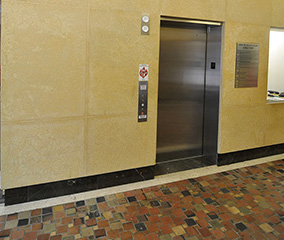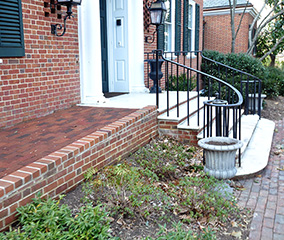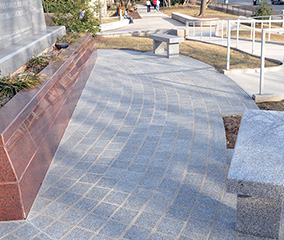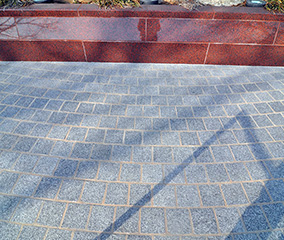
Masonry flashing is used to prevent moisture from penetrating your building.
Your masonry building relies on many individual parts that keep the structure sound. Over time, the individual parts degrade and must be repaired. Some issues are so apparent that you can notice them in time to fix them. However, some more serious problems may not be noticeable until after considerable damage has already been done. Masonry flashing is often installed to prevent long-lasting water damage. To determine when your flashing may need to be repaired by DelPrete Masonry, it first helps to understand the function and importance of masonry flashing.
What Is Masonry Flashing?
Masonry flashing is a barrier installed across brick or stone to redirect moisture and water away from the building and to prevent it from re-entering. Flashings come in different types to meet various budgets, visual styles, and operational goals. Metal masonry flashing will last the longest.
The masonry flashing material you select impacts the cost and the ease of repairs. Some types of flashing can last for a lifetime when properly maintained. Flashing exposed to many hours of bright sunlight every day tends to degrade faster, so you should also be mindful of environmental concerns that may influence the flashing your building requires.
Why Is Masonry Flashing Important?
Masonry flashing serves several important roles, from contributing to building stability to keeping moisture off the building’s exterior. Moisture intrusion is a critical problem masonry buildings face, and rain, high humidity, and leaky pipes are all potential problem areas. Caulking alone is insufficient to keep out moisture, so masonry flashing is installed to address moisture concerns comprehensively.
When moisture can invade your building, it can cause many problems, many of which you may not notice until damage has already been done. An unpleasant smell indicating mold is one common but often overlooked sign of moisture intrusion. It can be challenging to remove mold once it has taken hold of your interior walls. Just because you don’t see mold doesn’t mean it’s nonexistent.
Over time, moisture contributes to the gradual weakening of your structure. In brick or stone buildings, the masonry can start to crack or bulge if water seeps in, especially when it is cold and the water begins to freeze and expand.
When Does Your Masonry Flashing Need Repairs?
There are a few signs you can look for to see whether your masonry flashing needs to be repaired by a professional. Water intrusion is the most common sign. However, you may be able to inspect your flashing to find tenting or gaps at the joints that let water enter. Pay special attention to tight corners where flashing installation may have been more difficult.
Flashing also needs proper drainage cavities to divert water away from the building. If the drainage cavities are clogged, your flashing may not be able to remove moisture from the building. This leads to water stains and other evidence of moisture intrusion. The visual signs will be evident first, but inspecting the masonry flashing’s physical features is still worth your time. If you want to know the status of your masonry flashing, call DelPrete Masonry to have a professional inspect your building.
CONTACT DEL PRETE MASONRY TODAY!
Whether you are ready to start your next masonry project or are still hesitant and have questions, Del Prete Masonry is here to help. We have the experience and expertise to get it right the first time. Questions? Want to visit some of our residential or commercial projects? Ready to set up a consultation? Feel free to give us a call at 410-683-0650 or visit us online. We are happy to serve Baltimore City and County, Harford County, Carroll County, Anne Arundel County, and Howard County. To see examples of our work and to keep up with our new and exciting projects, be sure to follow us on Facebook, Twitter, and Pinterest.
Tags: masonry construction, masonry flashing, masonry repairs, water damage





























